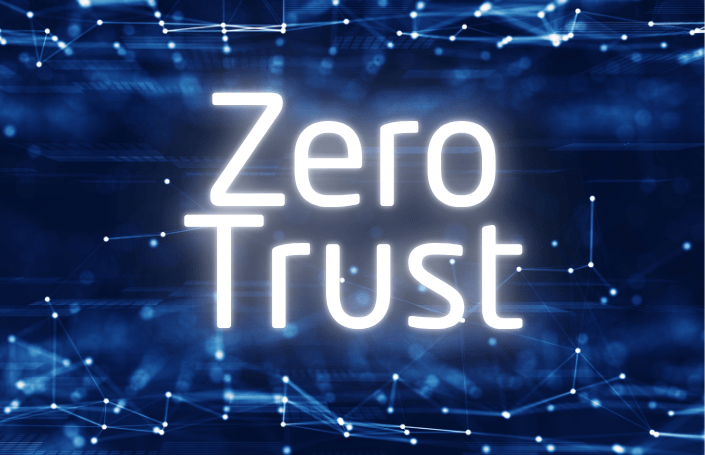Zero Trust Security: A Clear Guide for Businesses

For years, businesses have relied on the “castle and moat” approach to cybersecurity: build strong defenses around the perimeter, and everything inside is considered safe. But that approach no longer works. With remote work, cloud services, mobile devices, and increasingly sophisticated cyber threats, the traditional perimeter has vanished.
That’s why organizations are turning to Zero Trust Security, a modern approach built on a simple but powerful principle: never automatically trust, always verify. Instead of assuming users or devices inside the network are safe, Zero Trust requires continuous validation for every access request.
Let’s break down what Zero Trust means, why it matters, and how your business can start building toward this model.
Why Zero Trust Security Matters
Zero Trust isn’t just a trendy term—it’s a smarter way to protect your business. Here’s why it’s becoming essential:
Stronger Defense Against Modern Threats
Cyberattacks are more targeted and damaging than ever. Phishing, ransomware, and insider threats can slip past traditional defenses. Zero Trust reduces risk by verifying every user and device, every time. Even if one account is compromised, the damage is limited.
With the average data breach costing $4.45 million in 2023 (IBM), prevention isn’t optional; it’s essential.
Supports Hybrid and Remote Work
Employees no longer work exclusively from the office; they’re logging in from homes, airports, and coffee shops. Zero Trust secures access wherever your team works and on whatever devices they use, without sacrificing productivity.
Limits the Impact of Breaches
In a traditional network, one breach can give attackers free rein. Zero Trust stops lateral movement, isolating critical systems so intruders can’t spread unchecked. This containment buys your team valuable time to respond.
Helps with Compliance
Industries like healthcare, finance, and education face strict data security regulations. Zero Trust aligns with recognized frameworks, making it easier to meet compliance requirements and reduce legal risk.
Prepares You for the Future
Cyber threats evolve constantly. Zero Trust provides a flexible, layered defense that adapts as new technologies and risks emerge, keeping your organization resilient for the long haul.
Core Principles of Zero Trust
Zero Trust is built on a few key ideas:
- Never trust, always verify: Every user, device, and application must prove it belongs, regardless of whether it’s “inside” the network.
- Least privilege access: People and systems only get the access they need to do their job. This limits damage if an account is compromised.
- Microsegmentation: Networks are divided into smaller zones. If one area is breached, attackers can’t automatically reach everything else.
- Continuous monitoring: Suspicious activity rarely looks obvious. By monitoring activity in real time, such as unusual login times or access from unfamiliar locations, you can catch and stop threats early.
- Assume breach: Rather than hoping your defenses hold, Zero Trust plans for the possibility of compromise. This mindset encourages layered, proactive security strategies.
How to Start Implementing Zero Trust
Shifting to Zero Trust is a journey, not a one-time project. Here are high-level steps businesses can take to begin:
- Identify users and devices: Know who’s accessing your systems and from where. Visibility is the foundation of security.
- Strengthen identity verification: Use tools like multi-factor authentication (MFA) to ensure users are who they say they are.
- Set role-based access controls: Regularly review permissions to make sure users only have access to what they need.
- Segment your network: Isolate sensitive systems and data so threats can’t spread freely.
- Monitor activity continuously: Use tools that alert you to suspicious behavior in real time, so you can respond quickly.
- Plan for long-term adoption: Roll out Zero Trust in phases to avoid overwhelming your team and operations.
For an accessible, business-friendly introduction, the Cybersecurity & Infrastructure Security Agency (CISA) offers a helpful Zero Trust Maturity Model.
How Everound Can Help
Implementing Zero Trust doesn’t have to be complicated. At Everound, we help businesses take a practical, step-by-step approach tailored to your size, industry, and goals.
Here’s how we support your Zero Trust journey:
- Assess your current security posture: Identify risks, gaps, and opportunities for quick wins.
- Recommend practical strategies: No “one-size-fits-all.” We design Zero Trust roadmaps that align with your business goals.
- Implement the right tools: From MFA and access controls to continuous monitoring, we set up the technologies that make Zero Trust work.
- Train your team: Equip employees with the knowledge to recognize threats and embrace Zero Trust practices.
- Provide ongoing support: Security evolves, and so do we. We help you adapt as your business and the threat landscape change.
Zero Trust isn’t about distrusting your people; it’s about verifying every request so your systems, data, and teams stay safe. In a world where the traditional perimeter no longer exists, this modern framework offers peace of mind and resilience.
Ready to explore Zero Trust for your business? Contact Everound today, and let’s build a security strategy that protects your organization now and into the future.


.png)